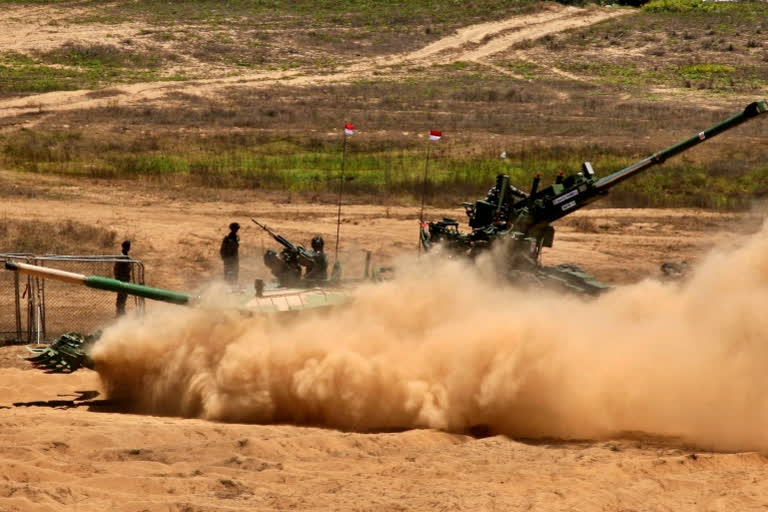New Delhi: More than just pure brawn, a boxing match in the ‘Lightweight’ category is more about fast thinking, lightning speed, agility and effective accuracy. In cutting-edge tank warfare, it is all that and maximum devastating offensive power, impregnable protection and easy transportability for rapid deployment to meet any operational situation. That is exactly what the ‘Zorawar’ is.
Set to weigh around 25 tons, the Indian Army’s planned ‘Zorawar’ is envisaged as an effective counter to the Chinese Type 15 light tanks that weigh around 33 tons.
To be equipped with state-of-the-art niche technologies including Artificial Intelligence, drone integration, Active Protection System, surveillance and communication capabilities and a high degree of situational awareness, the nimble-footed ‘Zorawar’ has been named after the legendary 19th century Dogra general Zorawar Singh who led blitzkrieg type attacks in Ladakh and present-day Gilgit-Baltistan.
According to top sources in the defence establishment, the defence ministry’s Acceptance of Necessity (AoN) for the ‘Zorawar’—armoured Fighting Vehicle-Indian Light Tank (AFV-ILT) in military parlance—is likely to be issued in September.
Said a source: “The defence ministry intends to procure AFV-ILT with engineering support package and other maintenance and training requirements to cater for Indian Army’s requirement of Light Tanks.”
“Presently, in-principle-approval has been accorded to the project and the indigenous defence industry is being engaged to achieve a fructification of the project in the earliest time frame… The AoN is expected next month.”
The plan is to procure the AFV-ILT under the ‘Make-I’ acquisition category of the Defence Acquisition Procedure (DAP) – 2020 in keeping with the ‘Atma Nirbhar Bharat’ and ‘Make in India’ ethos.
Also read: Boeing hard sells FA18 Super Hornet to Indian Navy
The PLA’s Type 15 tanks were deployed in the extreme cold and high-altitude regions near the Line of Actual Control (LAC) across eastern Ladakh in the aftermath of the escalation of the border tension with India that was sparked off by a series of brawls since April 2020.
Said the source: “The recent experiences along the northern borders have shown that armour equipment profile is one of the most prominent factors in defining operational capability of the land forces. The adversaries have inducted a large number of technological modern, ‘state of art’ tanks employed operationally as a mix of medium and light tanks with high Power-to-Weight ratios.”
During the ongoing border crisis with China in eastern Ladakh, the Indian Army had to induct a considerable number of T-72 and T-90 tanks in operational areas, gaining tactical surprise over the adversary and thereby forcing the adversary on a back foot.
“However, their tanks were primarily designed for operations in plains and desert terrain have their own limitations when employed in High Altitude Areas. They face a similar handicap when employed in marginal terrain of Rann of Kutch…. It is therefore an ‘operational necessity’ to procure Light Tanks to overcome the limitations faced by medium battle tanks and equip the Indian Army for all contingencies in High Altitude Area (HAA), marginal terrain and island territories besides its utilisation in the plains, semi-deserts and deserts.”
The Indian Army is actually no stranger to light tanks. The Stuart Tanks of 254 Indian Tank Brigade in Battle of Kohima in World War II, at Naushera, Jhangar, Rajauri and most successfully at Zojila in the Indo-Pak war 1947-48, AMX-13 tanks at Chushul and Bomdila in 1962, AMX-13 tanks at Chammb in 1965 and the amphibious PT-76 light tanks in 1971 with the PT-76 tanks leading the race to Dacca were all examples of successful usage of light tanks.
The AMX-13 and PT-76 tanks were phased out in the 1980s, after which the focus of the Indian Army shifted primarily to the western borders resulting in the conversion of PT-76 units to T-72 profile. At present, the Indian Army operates a mix of T-72, T-90 and Arjun MBTs.



